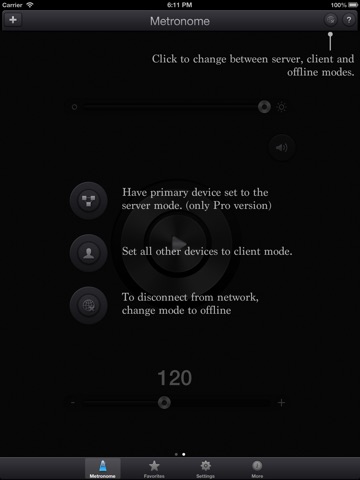
In summary, children who can synchronize most consistently, with the least variability in timing and rhythm, demonstrate more advanced neurophysiological responses linked with language skills. The study found that the training program had a positive effect across a range of measures, including timing accuracy, balance, response speed, visual motor coordination, upper limb speed, and agility.” “ Bartscherer & Dole conducted a study in which they examined the effects of a 7-week IM training on 9-year-old boys with attention and motor coordination deficits.

The study, as detailed by the Journal of Physical Therapy Science, also concluded: A recent study showed that following Interactive Metronome therapy children with ADHD had better attention, motor planning, language processing, reading comprehension and control of aggression. Research has shown that Interactive Metronome can help children improve their concentration and coordination as well as language skills and academic achievements. “ Interactive Metronome (IM) is a program in which an individual uses headphones, a computer screen, and a rhythmic beat to perform a variety of exercises while trying to stay on this beat.” Its patented auditory guidance system with visual feedback progressively challenges participants to improve their visual motor planning, sequencing, and timing.Īs Cincinnati Children’s Hospital explains:

Interactive Metronome combines the principles of a traditional, musical metronome with computerized precision to create engaging interactive therapy. Studies have shown Interactive Metronome to improve: In order to learn, a child must be able to filter out distractions, retain information in working memory, and process that information efficiently. Interactive Metronome is used to improve cognition, attention, focus, visual working memory and visual processing speed. They are shown to help your timing, memory, cognition, focus, and motor and sensory skills.Interactive Metronome (IM) is an evidence-based training and assessment tool. Today IM are used by healthcare professionals during therapy to help patients work on their timing and rhythm, and help improve their sensory integration. Which is why he created the IM, which could monitor and have more thorough feedback on an individual’s performance. He realized that the traditional metronomes didn’t offer as effective results, therefore he decided to work on a metronome that could provide the best results.Īlthough the IM was originally used for musicians, Jim Cassily had an even better idea that would help people further improve their auditory feedback, and overall brain efficiency. The Interactive Metronome was invented in 1992, by Jim Cassily to help musicians and athletes to improve their focus and coordination. Patients follow various exercises on IMs with headphones attached to their ears for auditory and visual feedback. Interactive metronomes (IM) are connected to computers. He then took credit for inventing the metronome. In 1816, Johann Nepumuk Mälzel, a German inventor, was inspired by Winkel’s vision, he decided to work on the device and patented it for musicians to use.

The first successful metronome was invented in 1812 in Amsterdam by Dietrich Nikolaus Winkel, a Dutch German inventor. Originally metronomes were made out of wood and had a metal clicker, but today most metronomes are electronic devices that sometimes also include a tuner. Traditional metronomes produce repeated clicking sounds at a certain pace that can be adjusted by the user.

Runners and other athletes can also use metronomes to measure their running pace or cadence and measure their heart rates after exercise. However, there are also Interactive Metronomes, computer-based metronomes that help patients in therapy with their cognitive performance. Metronomes are typically used by musicians to play at the recommended tempo according to the composer or publisher. Metronomes are tools or devices that help a person maintain a certain pace, usually for music tempos.


 0 kommentar(er)
0 kommentar(er)
